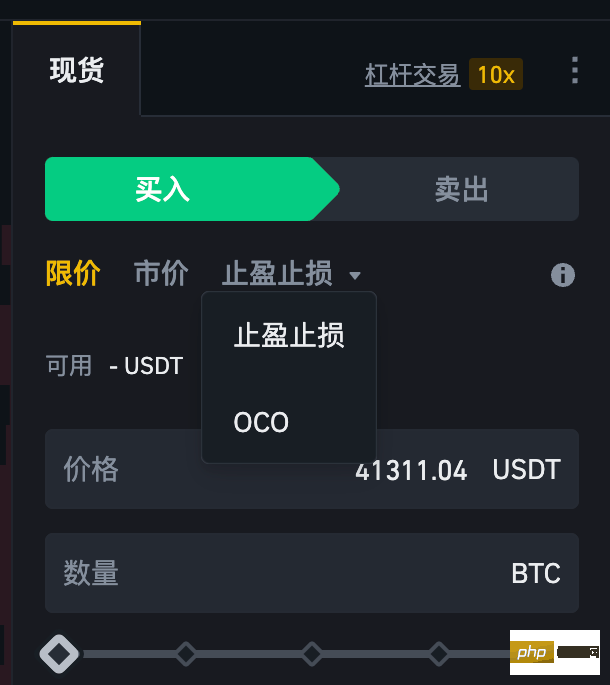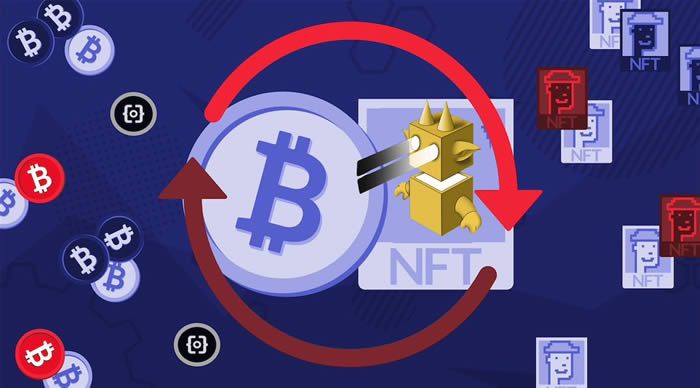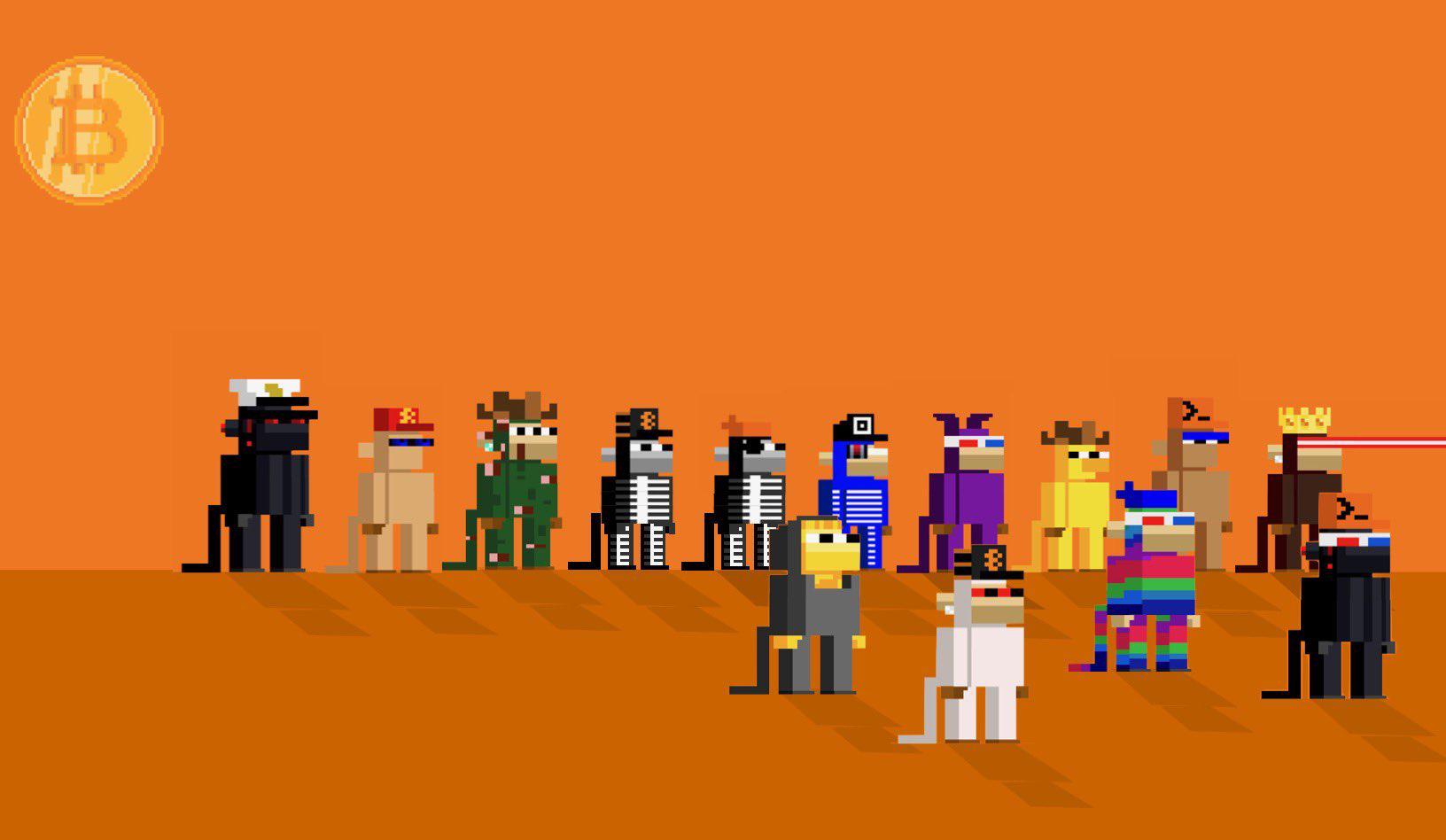 web3.0
web3.0 A few days after its launch, the market value was close to that of NodeMonkey. Why did Runestone become the second largest Bitcoin NFT?
A few days after its launch, the market value was close to that of NodeMonkey. Why did Runestone become the second largest Bitcoin NFT?As the market value of NodeMonkes surpassed BAYC and became the second largest NFT, relying on the rising market popularity and popularity, the rune project Runestone also successfully became the second largest NFT in the Bitcoin ecosystem by market value a few days after the airdrop. What are the reasons behind Runestone’s high consensus? What strategies are there for reference?
Runestone is an experimental rune project started by Leonidas, the developer of Ordinals, inspired by the rune project RISC. This project is also the largest collection of father and son inscriptions to date, with a total of 112,383, and is designed to reward players who contributed to the first year of Ordinals. However, unlike traditional inscriptions, Leonidas prefers to view Runestone as a MEME coin with no practical use. Runestone was created to spark player interest in Ordinals and reward those who demonstrate passion and dedication to the game. Leonidas hopes to create a more interesting and meaningful gaming experience for players through this project. Although Runestone may not be as functionally practical as traditional inscriptions, as a symbolic reward mechanism, it can

In February of this year, Runestone announced that it had Height 826,600 completed snapshot (first anniversary of the birth of Ordinals). But before the official khaki airdrop, Runestone’s over-the-counter trading was very popular, with the price rising and the transaction volume reaching millions of dollars. Until March 15th, Runestone, which had been warmed up for a long time, officially launched its airdrop, and all inscriptions were distributed in batches to 14,860 addresses.
Runestone still maintains high popularity after the airdrop, with a low listing rate and large investors continuing to add positions. According to OKX Web3 wallet data, as of March 19, Runestone’s floor price increased by more than 169.8% from the day of the airdrop to 0.0372 BTC, and the total transaction volume exceeded 818.6 BTC. Based on the current floor price, Runestone's total market value is approximately 4,180 Bitcoins, worth over $270 million, which is only a 41.3% increase from the market value of NodeMonkes, the No. 1 Bitcoin NFT project.

At the same time, Runestone’s listing rate is only 1.28%. The lower the listing rate, the stronger the consensus. The number of addresses held has exceeded 85,000, with a holding dispersion of 77.55%. Currently, the number of addresses holding more than 2 has exceeded 5,500, among which the number of addresses holding more than 50 has increased to 112. Large households have real money. Silver investment can drive market sentiment to a certain extent.
Runestone still attracts attention after the airdrop, which is due to many factors. On the one hand, Runestone adheres to the principle of fairness and does not conduct team allocation and pre-sales, which is highly respected. According to its airdrop rules, only wallets with at least 3 non-text/JSON inscriptions can receive 1 inscription. This strategy can not only exclude small holders, but also avoid the possibility of large players manipulating the market.
As one of the largest Ordinals airdrops in history, Runestone provides users with free airdrop services, which is particularly valuable in the current high transaction fee environment. In addition to the support of community donations, Runestone will use all 8 BTC (worth approximately $556,000) from the auction of Inscription The Runestone #63140674 to pay for the network fees required for the airdrop. This community support and use of funds adds more fairness and transparency to the airdrop campaign.

On the other hand, community users may be more concerned about the potential airdrop of protocol tokens. According to Casey, founder of the Ordinals protocol, he previously revealed that the main network of the Bitcoin network token protocol Runes protocol will be launched when the Bitcoin halving occurs in 2024. Leonidas recently revealed on social platforms that Runestone will issue MEME coins, holders will be eligible to receive them, and the code and supply of MEME coins will also be determined by the community. As Bitcoin approaches its expected halving on April 21, token expectations have increased the market’s attention to Runestone. In addition, more and more projects are giving Runestone holders more rights and interests. For example, the Ordinals series THE PROPHECY recently whitelisted addresses that have not placed orders for Runestone.
Overall, Runestone’s emphasis on early OG, fair treatment of various user groups, and bottom-up community building atmosphere are all important driving forces for its rapid market expansion.
The above is the detailed content of A few days after its launch, the market value was close to that of NodeMonkey. Why did Runestone become the second largest Bitcoin NFT?. For more information, please follow other related articles on the PHP Chinese website!
 比特币符文项目Runestone是什么?Runestone空投介绍Apr 14, 2024 am 09:30 AM
比特币符文项目Runestone是什么?Runestone空投介绍Apr 14, 2024 am 09:30 AM比特币符文项目Runestone是一个由匿名NFT专家和Ordinals开发者Leonidas领导的比特币Ordinals项目,旨在奖励在第一年参与Ordinals协议的玩家,由于其大规模空投,Runestone自发布以来就备受关注。那么,Runestone究竟是一个怎样的项目,它和符文(Runes)协议有什么关系呢?本文将对Runestone进行深入探讨,并对其未来的生态进行展望。Runestone是什么?比特币价格的飙涨也带动了比特币NFT的复苏,而近期最受热议的,莫过于比特币符文项目Run
 什么是OCO订单?Apr 25, 2023 am 11:26 AM
什么是OCO订单?Apr 25, 2023 am 11:26 AM二选一订单(OneCancelstheOther,简称OCO)可让您同时下达两个订单。它结合了限价单和限价止损单,但只能执行其中一个。换句话说,只要其中的限价单被部分或全部成交、止盈止损单被触发,另一个订单将自动取消。请注意,取消其中一个订单也会同时取消另一个订单。在币安交易平台进行交易时,您可以将二选一订单作为交易自动化的基本形式。这个功能可让您选择同时下达两个限价单,从而有助于止盈和最大程度减少潜在损失。如何使用二选一订单?登录您的币安帐户之后,请前往基本交易界面,找到下图所示的交易区域。点
 了解比特币NFT与以太坊NFT的区别,掌握比特币NFT的含义Jan 26, 2024 pm 06:30 PM
了解比特币NFT与以太坊NFT的区别,掌握比特币NFT的含义Jan 26, 2024 pm 06:30 PM比特币NFT在今年爆红!究竟什么是比特币NFT、对NFT生态的影响是什么、下一步又会如何发展?更重要的是,为何有人爱有人恨?什么是比特币NFT?比特币NFT是指在比特币网络上铸造的NFT(非同质化代币)。比特币的NFT资产发行过程实际上是将任意数据(如文本或图片)附着在比特币的最小单位“聪”上的过程,也被称为“铭刻/铭文”。2022年12月,比特币开发者CaseyRodarmor发布了一款名为ORD的开源软件,该软件运行在BitcoinCore软件之上。ORD允许用户通过两步操作在比特币区块链上
 Magic Eden多链钱包上线!一站式NFT管理、免费铸造、空投机会Feb 01, 2024 am 11:30 AM
Magic Eden多链钱包上线!一站式NFT管理、免费铸造、空投机会Feb 01, 2024 am 11:30 AM本站(120bTC.coM):Solana生态NFT市场龙头MagicEden,在去年3月中旬抢搭Ordinals热潮推出比特币NFT市场,如今已成为仅次于OKX交易量第二大的市场。此外,这也意味着原本仅支持Solana和Polygon(2022/11支持)的MagicEden,正式拓展到比特币网络,紧接着在去年3月底,再宣布支持以太坊。但MagicEden的展望不仅于此,他认为虽然他的平台支持了四个公链的市场,但用户需要为每个链连线不同的钱包,太不方便,对于要如何实现统一的市场,提升用户体验,
 以太坊NFT交易量逼近年度新高!Pudgy Penguins市值第3紧追无聊猿Feb 13, 2024 am 09:10 AM
以太坊NFT交易量逼近年度新高!Pudgy Penguins市值第3紧追无聊猿Feb 13, 2024 am 09:10 AM以太坊NFT交易量的增加与市值排名第三的NFT项目PudgyPenguins的持续发展密切相关。在过去的NFT熊市中,PudgyPenguins成功地保持了其市值排名,并吸引了大量投资者的关注。与此同时,新兴头像项目Pandora也迅速崛起,在市值排名中迅速攀升至第五名。这表明,市场对于NFT项目的需求不断增长,并且投资者对于头像类NFT项目的关注度也在提高。这一趋势预示着NFT市场的潜力和机会,为投资者和项目开发者提供了新的发展以太坊NFT交易量回温TheBlock数据显示,虽然比特币NFT交
 多个大热项目背后的“操盘手”,比特币NFT项目NodeMonkes迎强势涨势Feb 27, 2024 am 11:58 AM
多个大热项目背后的“操盘手”,比特币NFT项目NodeMonkes迎强势涨势Feb 27, 2024 am 11:58 AM团队背景以及金铲子属性等多方因素加持下,NodeMonkes节点猴价格屡创新高,被认为是比特币NFT龙头的有力竞争者。那么,在一众小图片同台竞技中,NodeMonkes如何在短期快速凝聚社区共识,并在火爆的比特币市场占据一席之地的?“NodeMonkes不是一个机构、运动、理事会或DAO,没有任何效用、路线图、事件和商品等,但喜欢尝试和创造很酷的东西并享用它们。”作为第二个登陆知名拍卖行苏富比的比特币项目,NodeMonkes是比特币上首个原创10KPFP系列,总量为1万个,由匿名成员Nodet
 索尼、富达、方舟等公司向美国证券交易委员会递交比特币现货ETF的证券注册申请Jan 19, 2024 pm 02:18 PM
索尼、富达、方舟等公司向美国证券交易委员会递交比特币现货ETF的证券注册申请Jan 19, 2024 pm 02:18 PM随着市场预测美国证券交易委员会(SEC)将在1月8号至1月10号期间批准首个比特币现货ETF,现货ETF似乎已接近最后一步。越来越多的迹象和消息显示这一进展,使得投资者对比特币市场的前景更加乐观。根据最新提交给SEC的文件显示,一些著名的比特币现货ETF发行商,如富达、灰度、方舟、Valkyrie和VanEck等,都已经递交了证券注册的「8-A表格」。而Bitwise则是在上周五就率先递交了8-A表格。这些举动表明这些公司正计划发行比特币ETF,以满足市场对于加密货币的投资需求。这也意味着投资者
 brc20铭文是什么Feb 28, 2024 pm 01:52 PM
brc20铭文是什么Feb 28, 2024 pm 01:52 PMBRC-20 是比特币上的一个Token发布标准,它规定了比特币上发行Token的名称、发行量、转账等功能,由社区爱好者@domodata于2023年3月8日创建,BRC-20创始第二天也就是3 月9 日有超过30,000 个「铭文」被铸造,其中文本类型「铭文」数量接近27,000 个。

Hot AI Tools

Undresser.AI Undress
AI-powered app for creating realistic nude photos

AI Clothes Remover
Online AI tool for removing clothes from photos.

Undress AI Tool
Undress images for free

Clothoff.io
AI clothes remover

AI Hentai Generator
Generate AI Hentai for free.

Hot Article

Hot Tools

PhpStorm Mac version
The latest (2018.2.1) professional PHP integrated development tool

VSCode Windows 64-bit Download
A free and powerful IDE editor launched by Microsoft

WebStorm Mac version
Useful JavaScript development tools

Dreamweaver CS6
Visual web development tools

SublimeText3 Mac version
God-level code editing software (SublimeText3)





